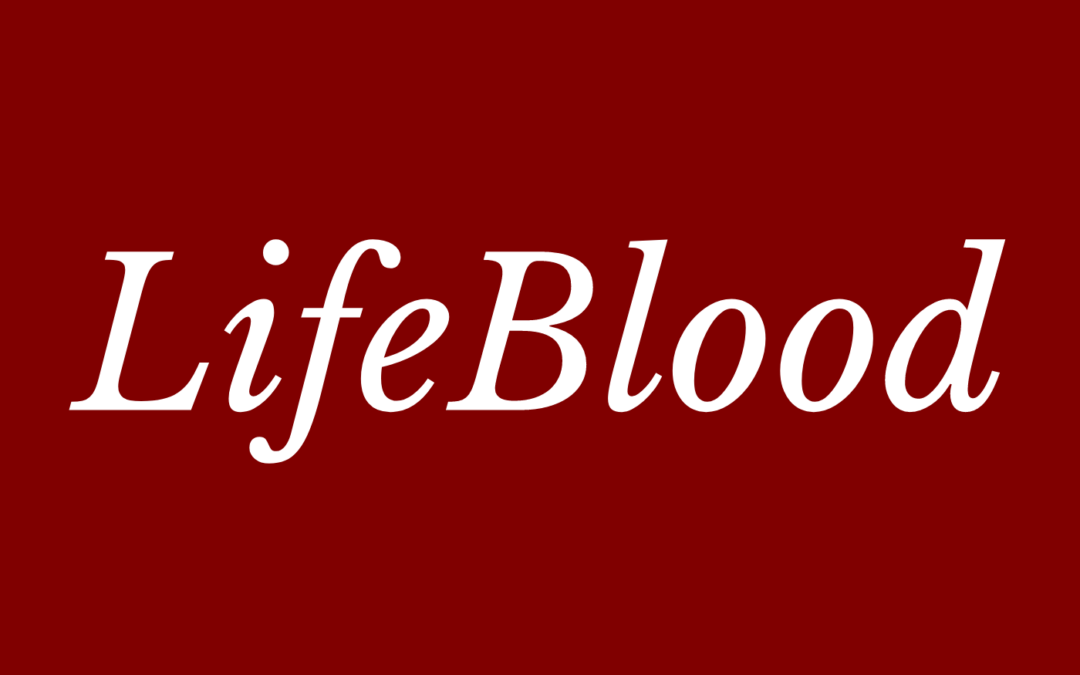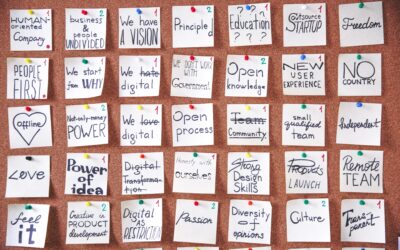Graphic Design with Ian Bower
We tend to commoditize graphic design and think about it in silos. Ian Bower talks about the risks associated with that approach and how to become better consumers of this essential component of our businesses!
Listen to us On
About the Episode
LifeBlood BRAND: We talked about graphic design, taking an integrated approach to it, how to be a better consumer of it, and the danger of doing it on your own with Ian Bower, entrepreneur and Founder of Graphic Rhythm.
Listen to learn how to start thinking about graphic design from an integrated versus siloed perspective!
You can learn more about Ian at GraphicRhythm.com, Facebook, Twitter, Instagram and LinkedIn.
Thanks, as always for listening! If you got some value and enjoyed the show, please leave us a review wherever you listen and subscribe as well.
You can learn more about us at MoneyAlignmentAcademy.com, Twitter, LinkedIn, Instagram, Pinterest, YouTube and Facebook or you’d like to be a guest on the show, contact George at Contact@GeorgeGrombacher.com.

George Grombacher
Lifeblood Host

Ian Bower
Guest
Episode Transcript
george grombacher 0:00
Come on. He is strong. He is powerful he is he and Bauer. He is entrepreneur and founder of graphic rhythm. They’re designed for them helping business owners and digital agencies breathe life into their projects and ideas. Welcome in.
Ian Bower 0:25
Thanks for having me
george grombacher 0:26
excited to have you on and tell us a little about your personal life some more about your work? And why you do what you do.
Ian Bower 0:34
Oh, boy, oh, my well, so my personal life? You know, is? Well, it’s tough. You see, I wanted to immediately say my personal life is I’m a business owner. And that’s kind of like, contradictory, right? You know, so I come from, I’m a chef, I used to be a chef for a long time. And so I have kind of this creative background and his production background. I have, you know, wife, and two kids, and we love hiking and outdoors and stuff like that. But, you know, I own a few different businesses. And one of them, of course, is this graphic design agency, and the design agency, my I’m actually not a designer. So that’s like a little fun fact that my superpower here and my, my whole function in this design agency is as facilitator, and kind of like, helping people get the thing that they need, and kind of like improving the way that people talk to one another. So I don’t know if that answered your question. That was kind of a meandering answer, but that’s all
george grombacher 1:40
good. And what is, uh, for lack of a better term? What, what is the real driving? Why behind? Doing it?
Ian Bower 1:51
Yeah, so the Why is kind of, like, selfish personal, which is that I was always frustrated with graphic design. And, you know, like I was, I was always the business owner who couldn’t get the thing done, right, or who had a problem that I couldn’t solve, you know, like, so like, there’s like questions like, big questions that I had, like, Why do logos cost so much money? You know, and, you know, isn’t it just a stupid graphic design? You know, we’re like, what is even possible in some of the design software, you know, if I had a design to produce, I had no idea like, what a graphic designer could even do. And so I got good at solving those things. And I got good at figuring out the answers to those questions. And, you know, so then when I started, when we started offering design, as a service, we did it differently than a graphic designer would, because a graphic designer is doing it from the place of I’m a graphic designer, and here’s what I want to offer people. But my perspective was more like, here’s the thing that another business owner needs from us, you know, and so our services are all a little different than you would expect out in the wild, because they’re mostly conceptualized by me. And I’m, I’m my own target market. So
george grombacher 3:17
I like it. It’s a whole sort of first principles thinking, and the folks that started Airbnb, they were not from the hotel industry. And Ilan Musk is from outer space. And so he’s not from any of the industries that he’s working on. But he is sort of apply that that those those principles of what, you know, it perfectly conceived without any of the assumptions of being a graphic designer, what what would we do differently? So you were frustrated, you’re like, why does this stuff cost so much? I don’t even understand what’s possible to now fast forward. So you want people to come to you and say, What?
Ian Bower 4:02
Well, I mean, so what do you mean by that? You’re like,
george grombacher 4:06
you say, here I am. I’m trying to create this. If I’m a restaurant, a perfect menu, and then and then the kind of here’s, here’s the problem I’m trying to solve. How, how can you help me to do that?
Ian Bower 4:22
Yeah, so if I would say that the way that our clients articulate a problem, it’s really kind of like, I go on other places, or typically, it’s more like I’ve worked with freelancers, you know, and stuff like that, and I haven’t been able to get where I’m trying to go. Can you guys help me, you know, and it’s, you know, like, there’s a lot of really talented graphic designers out there in the world. But there’s this communications issue and you know, like a lot of designers and I frequently, actually perience that with cooks, were they, they were very technical, they were very proficient at their work. But there was some soft skills that were kind of lacking, you know, and it’s the same exact way with graphic designers because they tend to skew towards solitary, they tend to skew towards more creative rather than analytical. You know, and so working with clients, and those soft skills working with clients aren’t always necessarily there. So, you know, a lot of times, people that work with us have been burned in the past. And, you know, maybe they’re a little gun shy, and they want to know how this is going to be different than what they’ve tried in the past. And so that’s where we kind of come in.
george grombacher 5:43
Nice. I appreciate that. I was wondering what the sort of crossovers were between your experience as a chef, and doing graphic design. So certainly interfacing with a cook, that certainly does make sense. But how about just just just just more in general?
Ian Bower 6:00
Yeah, so I mean, there’s a lot of crossover actually. And it’s, like, I can work remotely, but I could feel my team rolling their eyes, every time I say, you know, when I ran kitchen, this is how we did it. Because, you know, again, like, you know, and I like that you brought up first principles, but it’s also this idea of like operating in a vacuum, you know, like, we never looked at our competitors, when we were building some of this stuff. And so it’s like this organic kind of thing that we came up with. And so the crossovers, a lot of production crossover, you know, I bring that in quite a bit like, you know, we’re creating the same dish, that is the same every single time a customer sits in an orders, it is really, really hard. And we take it for granted as a populace. But it’s a, it’s an incredibly difficult thing to do. And so, when it comes to production, in the graphic design world, it’s actually even more difficult, because instead of now creating the same dish, for everybody who orders it, it’s we’re creating a completely unique original dish for every customer that orders it, you know, and so having some production standards in place, you know, things that we do, you know, we’re in the restaurant business, particularly at the higher end, I was a fine dining chef, you don’t see so much at like, the lower in places, but there’s this, the, what we call the past. So the past is that that brightly lit area at the front of the kitchen. And usually the sous chef is standing there. And his job is to inspect every single plate before it goes out and add finishing touches to it. And so I always like in what we do to that kind of process. So, you know, we create a graphic design, and it goes to the past and creative director looks at over and puts out any finishing touches, and then we send it out to the customer. So that’s one of the ways that I think about it. And also things like we have a list of things we do to make our lives easier or to improve the quality of our work. You know, which was something that I always found valuable, just for alignment purposes in the kitchen.
george grombacher 8:07
Nice. Yeah, I appreciate that. So somebody comes in to say, you know, I’ve been working with freelancers just sort of piecemealing things, putting it all together. And you certainly appreciated that you’re it’s kind of a natural thing to want to do. So you have said, what we’re going to do is make it so people don’t need to do that they can come to us for all of their needs. And you’ve structured it in a way that well tell me how you decided to structure your your, your, your, your client engagements.
Ian Bower 8:45
So there’s a few different ways that you can work with us. And it’s really, the differences are really about service level. Okay, so we think about graphic design as, as more of like a construction business, right? So you have the people who do the work, right? The plumbers, the electricians, the carpenters, and so on and so forth. Right. And then you have the people who plan the work, the people who understand what a good job looks like that. You know, so it’s really like the general contractor or even the architect, you know, and graphic design is a lot like that, right? So let’s say you need a social media post designed, you can find an electrician, you know, you can find a graphic designer who is proficient and can do the work. But you need to really kind of be the architect, we call that production design. So you’re going to come with the ideas, and then the designer is going to bring their skills and talents to bear on your project, right. So you’re going to come we call it daily design. It’s like a monthly design subscription. So you bring You’re ideas and then the graphic designer breathes life into it. So that’s one of the service levels. But then, if you feel like I can’t, I’m not good at this. And I know and I don’t feel like I can really, you know, direct a designer the way that I want to, then we have a different service level, which is more of like on a one off engagement. So, for instance, our logo and visual identity always includes the services of a creative director. So you you say, you know, we talked through what your big idea is, but then you are creative director will actually, you know, figure out how it gets done and, and come up with all the creative ideas, and then our graphic designer will bring life into what the creative director comes up with. So those are kind of like the two different service levels and the way that we think about design and the way that you can engage with us.
george grombacher 10:53
Nice, how would you coach people on how to be better consumers of graphic design?
Ian Bower 11:01
So that’s actually tough. And that’s actually one of the things that I we work a lot on is kind of coaching our clients to, you know, to submit that better, better design briefs, really. So the first thing that I would, I would kind of say is, I don’t know if it’s necessarily the Internet of Things, but it seems like the value of graphic design services are undervalued in a lot of cases. And almost commoditized. And so I would say, first of all, to associate more value with graphic design, and the the clients that we talked to who really get value are the ones that have burned burned in the past by going down super cheap solutions. Because it is really, a lot of times you get what you pay for. And, you know, I think that there’s a misconception that there’s like a, you know, like your designers back there with his box of crayons, and how hard can this be, but there’s a really quite a bit that goes into a really nice looking graphic design layout and the way that it’s consumed. So that’s the first kind of thing is, you know, adjust your perception of the value of graphic design. And then, I would also say, if you are not a graphic designer, and you are purchasing graphic design services, which I assume is most people don’t try to be the graphic designer, when you are providing a design brief. And by that what I mean is a lot of our clients get tangled up pretty quickly once they start providing specific design direction. So and I’ll give you an example. It’s like, you know, add more contrast to this part, or, you know, you know, use this stock photo and put a wash over it. And you know what I mean? Like, so it’s like, super specific design direction. And the reason that I don’t recommend you do that is because you’re not a graphic designer, right? And I think that you probably lack. And I’m the same way I lacked the ability to really conceptualize in its entirety, like what the results of my design direction are going to be. And then so then what happens is a designer thinks, okay, well, they told me exactly what to do, I’m going to do exactly what they said. And then it’s terrible. And now you’re like, well, this designer sucks, right? It’s way more effective and constructive. And you’ll get a better result if you speak more in terms of goals. So like, I would like this to be a bright, sunny image that definitely includes a vineyard in the background, right? That’s really helpful. Now the designer can use their skills and experience to say, okay, maybe a lens flare, or some kind of lighting effect like that would would look really good on this and help accomplish the goal. Same thing with revisions and revisions is where we see a lot of this like over over direction, because now the clients like oh, I’ve got to like put my hand over the designers and like control their mouse. So what we recommend is this convention where you say it’s too It’s too dark, it’s too grungy, it’s too light. It’s too childish, you know, and then let the designer adjust.
george grombacher 14:24
Interesting, that certainly does make sense. I never really thought about how well it’s it’s so challenging for, for somebody to articulate in words what they do. So creating their own copy is oftentimes challenging, but to actually try to do that visually would even be harder. And so I certainly appreciate what you’ve just sort of laid out and anytime we could teach people how to be better consumers or better users of a product or service. I think that that’s that’s, that’s, that’s, that’s definitely for the best so I’m not familiar if if if the way that you’ve designed your business is unique, but how is how is it being received? It’s more of a for lack of a better term. I don’t want to call it retainer or subscription. How How do you describe it?
Ian Bower 15:17
Yeah, so it’s a subscription is kind of is the core thing that we do is so and it’s unique in that, you know, there’s a lot of subscription design services out there, they seem to be cropping up every day. And we’re unique in a couple different ways. The first way is that we don’t offer an unlimited model, like a lot of our competitors like to offer an unlimited business model. And we’ve, we feel like it’s somewhat deceptive, right? Because you are, in fact, limited, you’re limited by production capacity are limited by timelines, you’re limited in a bunch of different ways. And so what we do is we do design credits. So you’re, you’re not unlimited, we’re telling you very specifically, how much of our production capacity that we’re able to give you. And that’s measured in design credit. So if you have a most designs are like in that two design credit range, you know, so you get an idea of like, Okay, well, if a social media post is to design credits, and I’ve got 50, that means I’ve got about 25 of these things that I can order every month, you know, or if I need a logo, that’s going to be five or 1010 credits, so it’s going to eat up a little bit more of the production capacity. So that’s one way that we’re different. And then the other way, of course, is that we are what we call a full stack design agency, we really want to provide services no matter where you are. So if you need a full on full service, like, you know, logo, visual identity service, you know, we can work with you on that you have a creative director, and you can, you know, do that. And then the way that we delivered, like, particularly like our logo and visual identity service is way different than, well, not way different. But it’s it’s unique, because again, it’s got it’s like got my hands all over it, you know, and so for instance, when I would get a logo back, like, I’ve tried all these different logo packages and services, like contest websites, and stuff like that, and then I would get a logo back and I’d be like, what do I do with this? Yeah, like, like, Okay, great. Do I just like stick it everywhere? You know, like, I still have a lot of questions like, how do I What does a social media post look like for my brand? Or, you know, like, Am I doing the website? Right? Like, Is this right? Is this what you had in mind, Mr. designer, and because I felt unsupported, I was kind of like, given a logo and said, adrift. And so we try and go much, much further. When we do a brand. Brands visual identity, we actually mock up the logo, we create examples of how your social media posts should look, or your website banner should look, you know, we provide guidance on different design elements and how they interact together, you know, so that if you wanted to just take this logo, visual identity package, and then go off on your own and use Canva, or, you know, Wix or whatever, and just be your own designer for a while, you could do that with much more success, because we’re really just trying to set you up for success in that regard. So that’s one of the other ways that we’re different as we really have this. You know, it’s not like you’re not going to get a traditional graphic design agency experience with us. We try and go a little bit further.
george grombacher 18:25
I love it. That makes sense. Well, yeah, thank you so much for coming on. Where can people learn more about you? How can they engage with you?
Ian Bower 18:34
So if you want to learn more about our services, you can go to graphic rhythm.com. And if you we set up a special landing page for your audience, it’s a graphic rhythm, comm slash gr slash lifeblood, and you’ll be able to download a goodie there.
george grombacher 18:54
Excellent. If you enjoyed this as much as I did, show your appreciation and share today’s show with a friend who also appreciates good ideas. Give us the website again in
Ian Bower 19:04
graphic rhythm calm. And then the other part of it is it’s graphic rhythm.com slash gr slash life blood.
george grombacher 19:13
Excellent. So go to graphic rhythm, comm slash gr slash lifeblood and get started. Thanks, Gideon. Thank you. And until next time, keep fighting the good fight. We’re all in this together.
More Episodes
How to Create a Monthly Cash Flow Plan
Having a monthly cash flow plan is essential for your long-term financial success. Without understanding how much money you have coming in, and how much is going out, you won’t be successful. When it comes to personal cash flow, Earnings - Spending = Savings. When we...
The Importance of Accountability in Personal Finance
What is the importance of accountability with your money? Since money plays a vital role in every aspect of our lives, accountability is critical. We must hold ourselves, our loved ones, and our partners accountable. Another important consideration is the time...
DIY Money: How to Make it Happen on Your Own
Can you successfully navigate your own personal finances? Can you DIY money? Yes. Financial planning is determining your financial goals, looking at your current situation, and devising strategies for achieving those goals. It’s best viewed as a process because...
How to Be Good at Financial Decision Making
We all want to know how to be good at financial decision making. And it’s easy, but it’s not simple. It’s impossible for anyone to eliminate all bad decisions. What we want to do is minimize how many we make. The wrong financial decision can delay our most...
Set It and Forget It: How to Automate Your Finances
Is it possible to “set it and forget it” with our personal finances? Our time and attention are just as valuable as our money. When we can stop doing menial tasks like paying bills and balancing our checkbooks, we can spend our time and attention on other...
Having a Financial Conversation With Our Senior Loved Ones
Having the money talk with aging loved ones is important. We’re all going to get there eventually, the lucky ones, that is. Old age. And we’ll see that first in our parents if we’re lucky enough to keep them with us that long. Because with age comes a decreased...
What Gets Measured, Gets Managed: How to Create Financial Systems
In personal finance as well as corporate, what gets measured, gets managed. CFOs handle the finances of their organizations, and there are many stakeholders who rely on their data and insight. They look back at historical results, as well as plan and forecast...
How to Set and Keep Your Financial Priorities
Because money plays such an important role in our lives, we must establish clear financial priorities. While money won’t bring us happiness, a lack of money can most certainly bring stress and anxiety. It’s also really hard to think about the big picture and to...
A Practical User’s Guide to Qualified Accounts
Qualified accounts are the primary way we save for retirement but it wasn't always that way. In 1875, the American Express Company developed the first private pension in the United States. Prior to that, the military and government had been providing pensions since...
Join the show.
Interested in being on the show? Tell me a little bit more about you and what you’d like to talk about!














